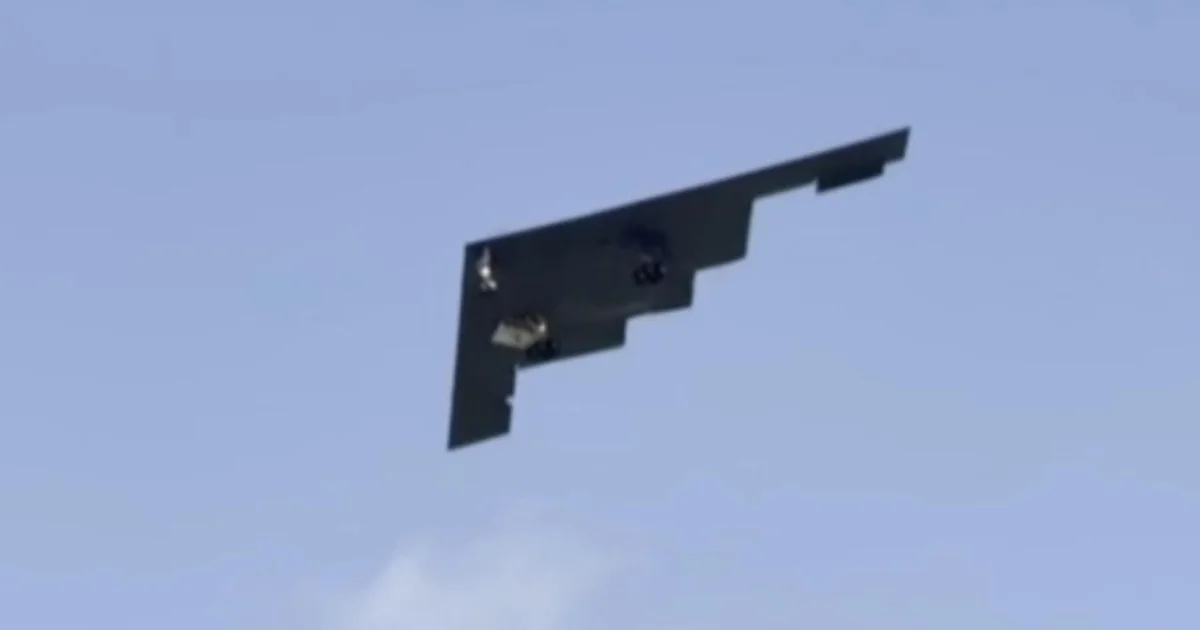
Operation Midnight Hammer and the Fallout: Warnings, Whiplash, and What Comes Next.
Posted in :
Operation Midnight Hammer, a massive U.S. military strike on Iran’s nuclear facilities, may have looked like a success on paper—but the real outcome is mired in uncertainty. With unclear damage, rising nuclear threats, and domestic disillusionment with Trump’s leadership, the fallout reaches from Tehran’s bunkers to America’s broken infrastructure and social fabric. A new wave of mobilization may be emerging in response.
Operation Midnight Hammer marked a high-stakes moment in US-Iran relations, but the ripple effects—politically, socially, and even domestically—are only now coming into focus. This blog takes a conversational, unexpected journey through conflicting reports, policy missteps, and the very human aftermath.
Sometimes world-changing events don’t arrive with a bang, but with a jumble of headlines, gut feelings, and late-night rants. I still remember snacking on cold pizza, phone open to endless notifications, when the news broke: Operation Midnight Hammer had kicked off. On the surface, the ‘precision’ strikes sounded surgical—almost reassuring. But then the talking heads spiraled, Malcolm Nance warned of war, and every side started spinning wildly different stories. What followed was less a clean operation and more a cascade of uncertainty, outrage, and odd, deeply human consequences. Let’s untangle the chaos.
The Strikes Heard Round the World: Operation Midnight Hammer and the Iran Nuclear Program
When news broke about Operation Midnight Hammer, the world paused. This was no ordinary military maneuver. Over the course of 37 tense hours, the US military launched a coordinated blitz against three of Iran’s most crucial nuclear enrichment facilities: Fordow, Natanz, and Isfahan. The scale was staggering—more than 125 aircraft, including the legendary B-2 stealth bombers, Tomahawk cruise missiles, and even nuclear-powered submarines, all converged with a single goal: cripple the Iran nuclear program.
The operation’s precision was something out of a modern war movie. Stealth tactics, careful timing, and the first-ever combat use of the GBU-57 Massive Ordnance Penetrator—those bunker-busting bombs designed to punch through layers of rock and steel—set a new precedent for future US military strikes against hardened targets. On paper, it looked like a masterclass in military coordination.
But here’s where things get murky. Almost as soon as the dust settled, questions started swirling. President Trump and his allies were quick to claim total victory, boasting that Iran’s nuclear enrichment facilities had been “completely and totally efficient[ly]” destroyed. Yet, as Malcolm Nance pointed out, “The strike was simply a long-range bombing attack that went off without any hiccups.” There was no independent verification. No satellite images released. No international nuclear observers allowed in to confirm the damage. That lack of transparency has fueled a wave of skepticism, both at home and abroad.
What’s really going on inside Iran’s nuclear program now? That’s the million-dollar question. Research shows that while the US military’s advanced technology and coordination were on full display, the actual impact on Iran’s nuclear ambitions is still up for debate. Some experts warn that the Iranians, anticipating an attack, may have already dispersed their most valuable nuclear materials—possibly stashing uranium in underground parking lots, goat sheds, or other makeshift hiding spots. The idea that everything was sitting in one place, just waiting to be bombed, seems almost laughable in hindsight.
And then there’s the human factor. The strikes may have targeted the “old hands” of Iran’s nuclear program, but as the conversation goes, “it’s a young guy who has his doctorate, who’s 30 years old, who’s going to be the Oppenheimer of Iran.” In other words, a new generation of nuclear scientists—untouched by the bombing—could be more determined than ever to rebuild. If anything, the attack might have lit a fire under them, pushing Iran to accelerate its efforts to develop a nuclear weapon as a deterrent. The logic is chilling: if Iran manages to detonate a bomb, the threats from America and Israel could lose their teeth overnight.
There’s also the uncomfortable reality that even the most advanced bombs have their limits. Reports suggest that the Isfahan site was so deeply buried that even the GBU-57s couldn’t make a dent. So, while centrifuges at Fordow or Natanz might have been hit, the core of Iran’s nuclear material could remain untouched—or worse, scattered and hidden. As one observer put it, “the mission executive objective seemed to rely on the presumption the Iranians would never move it. That’s a laughable assumption.”
- Operation Midnight Hammer was a 37-hour blitz targeting Fordow, Natanz, and Isfahan.
- Over 125 aircraft, including B-2 stealth bombers, were deployed.
- First operational use of the GBU-57 bunker-busting bomb.
- Effectiveness remains unverified; skepticism over whether Iran’s nuclear threat is truly diminished.
- Iran’s younger nuclear experts may now be racing to reconstruct or even accelerate the program.
All of this leaves the world in a strange place. The US demonstrated its ability to strike hard and fast, but the aftermath is anything but clear. The lack of independent verification, the possibility of dispersed nuclear material, and the emergence of a new generation of Iranian scientists all point to a future that’s still very much uncertain. The whiplash from Operation Midnight Hammer isn’t just about military might—it’s about what comes next, and whether the world is any safer for it.
When Foreign Policy Gets Weird: From Trump’s Bravado to Real-World Fallout
There’s a certain whiplash that comes with watching Trump foreign policy in action. Operation Midnight Hammer is a prime example. Within minutes of the last bomb dropping, President Trump was on camera, hailing the strike as a “monumental success.” He claimed the US military had obliterated Iran’s major nuclear enrichment facilities, calling the operation “completely and totally efficient.” The problem? Intelligence agencies and international nuclear observers hadn’t even had time to confirm the details. It was a victory lap before the race was officially over.
This pattern—Trump’s impulse to exaggerate, to declare victory before the dust settles—has drawn sharp criticism. National security expert Malcolm Nance summed it up:
“Trump’s bluster and braggadocio…was not backed up by intelligence.”
It’s not just about bravado. Critics point to a dangerous mix of arrogance and incompetence, with undertones of white supremacy, that shapes the Trump administration impact at home and abroad. It’s one thing to make bold claims for political gain; it’s another when those claims ignore real-world risks and consequences.
The Human Cost: Food, Infrastructure, and Social Programs in Chaos
While the headlines focused on US military effectiveness overseas, the domestic fallout was quietly building. Research shows that under the Trump administration, resources were misallocated, and the effects rippled through everyday American life. Food aid was blocked or delayed, with reports of food literally rotting in warehouses and fields. California’s produce, for example, sat unharvested as worker shortages and logistical breakdowns mounted. The food supply impact was real—children and seniors who depended on programs like Head Start and Meals on Wheels suddenly found themselves at risk.
It didn’t stop there. Infrastructure projects stalled across the country. Universities, like Auburn, saw construction grind to a halt. Contractors walked off job sites, and some never returned. One former Trump supporter, a contractor herself, admitted on air that she regretted her vote after experiencing firsthand the worker shortages and project delays. “Too late,” she said. “The lepers have already eaten everyone’s face and now it’s time for the lepers to come for all of us.”
Exaggeration, Regret, and the Fallout of Political Theater
It’s easy to laugh at the over-the-top claims, but as one commentator put it, “this is literally life and death, right?” The Trump administration impact wasn’t just a matter of political theater. It meant real pain for real people. Social programs were defunded, infrastructure crumbled, and the US slipped out of the top 20 happiest countries globally. The sense of national shame grew as the country watched food rot, buildings sit unfinished, and workers grow disillusioned.
Even among Trump’s base, there was a sense of regret. Supporters who once cheered his bravado began to feel the sting of broken promises and neglected responsibilities. The backlash was unexpected but telling—when the consequences of foreign policy decisions hit home, the reality is hard to ignore.
The Billionaire Windfall: Elon Musk and the Great Wealth Transfer
Amid all this chaos, another story unfolded: the transfer of wealth to billionaires. Critics argue that, under Trump, policies favored the ultra-rich—people like Elon Musk—while ordinary Americans struggled. Funding was slashed for essential programs, and the gap between rich and poor widened. As one viral tweet put it, “Elon Musk warning about Trump’s abuses while wearing a ‘Trump was right about everything’ cap underscores what a stupid, dishonest time we’re living in.”
The Elon Musk wealth transfer became a symbol of broader social safety net erosion. Money flowed upward, while those at the bottom faced increasing hardship. The frustration was palpable, fueling calls for general strikes and renewed activism.
Disconnected Celebrations, Real-World Consequences
Trump’s post-strike celebration was criticized as premature and disconnected from ground realities. The operation may have showcased US military effectiveness, but the aftermath revealed a deeper problem: a pattern of neglecting real impacts for political gain. As research indicates, the domestic fallout from these decisions is affecting everyday Americans—not just the world stage.
In the end, when foreign policy gets weird, it’s not just about what happens overseas. It’s about the food on the table, the jobs that disappear, and the sense of community that erodes. And sometimes, even the loudest supporters start to wonder if the cost was worth the show.
Collateral Uncertainty: Nuclear Fears, Homeland Security, and the Seeds of Social Mobilization
Operation Midnight Hammer was supposed to be a clean break—a decisive strike to end the Iran nuclear threat, at least for now. President Trump and his supporters were quick to claim total victory, boasting that Iran’s major nuclear enrichment facilities were “completely and totally efficient[ly]” destroyed. But as the dust settles, a different kind of anxiety is taking hold. The truth is, nobody—neither international nuclear observers nor US intelligence—can say with real certainty that Iran’s nuclear ambitions have been neutralized. If anything, the uncertainty has only deepened.
Research shows that while the operation was a technical and tactical success, it may not have achieved its ultimate goal. The assumption that Iran would simply leave its nuclear materials and infrastructure in place was, in hindsight, naïve. As Malcolm Nance bluntly put it, “That’s a laughable assumption.” In reality, Iranian officials and scientists likely began dispersing their most valuable nuclear assets the moment tensions escalated. Now, with older scientists reportedly killed in the strikes, a new generation—young, highly educated, and perhaps even more motivated—could be stepping in to accelerate Iran’s nuclear program. The image of a “30-year-old Oppenheimer of Iran” working feverishly in underground labs or remote sheds isn’t just a talking point; it’s a genuine concern that keeps intelligence analysts up at night.
This lack of clarity over Iran’s nuclear capabilities is feeding a new wave of anxiety and calls for vigilance. The world has seen this movie before: a military operation that’s hailed as a turning point, only for the underlying threat to resurface in new and unpredictable ways. The Iran nuclear threat, far from being eliminated, may have simply gone underground—literally and figuratively.
But the fallout from Operation Midnight Hammer isn’t just about foreign policy or nuclear weapons. It’s also about what’s happening here at home. The Homeland Security deportation report has added fuel to the fire, revealing that 93% of detainees swept up in recent crackdowns have no criminal record at all. Only 7% had even minor legal infractions. These are people who pay taxes, work hard, and contribute to their communities—hardly the “dangerous criminals” often described in political rhetoric.
This revelation is sparking outrage and a sense of injustice that cuts across communities. People are starting to see the double standards, the cracks in the system, and even some former MAGA supporters are expressing regret and frustration. One anecdote stands out: a contractor who once supported Trump now finds himself unable to staff his projects, lamenting that the workforce he relied on has vanished. The resentment is palpable, and it’s not just limited to one side of the political spectrum.
What’s emerging is a convergence of social and political reactions. The sense of whiplash from Trump foreign policy incompetence—boasting about military “success” abroad while ignoring the real costs at home—is driving people to reconsider their allegiances and priorities. There’s a growing call for general strikes mobilization, a movement that goes beyond defending one group or cause. As Malcolm Nance put it,
“We need to mobilize this nation again. Not just for the defense of Latinos, the defense of all of us.”
This isn’t just about Iran, or immigration, or even Trump. It’s about a broader reckoning with the way power is wielded, who pays the price, and how ordinary people can push back. The seeds of social mobilization are being planted in the cracks left by failed policies and broken promises. Whether it’s the fear of a resurgent Iran nuclear threat or the injustice exposed by the Homeland Security deportation report, people are waking up to the need for collective action.
In the end, the story of Operation Midnight Hammer and its aftermath is still being written. The uncertainty—about nuclear weapons, about justice, about the future—isn’t going away. But neither is the determination of those who refuse to accept the status quo. The next chapter may well be defined not by what happens in distant bunkers or government offices, but by what ordinary people do when they decide enough is enough.
TL;DR: The story of Operation Midnight Hammer isn’t just in the bombs dropped, but in the confusion, backlash, and hard questions left in its wake—from Iran’s nuclear ambitions to fractured US politics and the realities for ordinary people.
OperationMidnightHammer, IranNuclearProgram, USMilitaryStrikes, TrumpForeignPolicy, IranNuclearFacilities, IranNuclearEnrichmentFacilities, USMilitaryEffectiveness, TrumpAdministrationImpact, IranNuclearThreat, B-2StealthBombers,Iran nuclear program strike, Trump foreign policy backlash, Malcolm Nance Iran analysis, xAI billionaire windfall, general strike social mobilization.
#OperationMidnightHammer, #IranNuclearThreat, #USmilitary, #ForeignPolicy, #B2Bomber, #TrumpImpact, #NuclearSecurity, #WorldPolitics, #Geopolitics, #CurrentEvents,#OperationMidnightHammer, #IranStrike, #TrumpForeignPolicy, #NuclearUncertainty, #SocialMobilization, #MalcolmNance, #DeportationReport, #GeneralStrike

